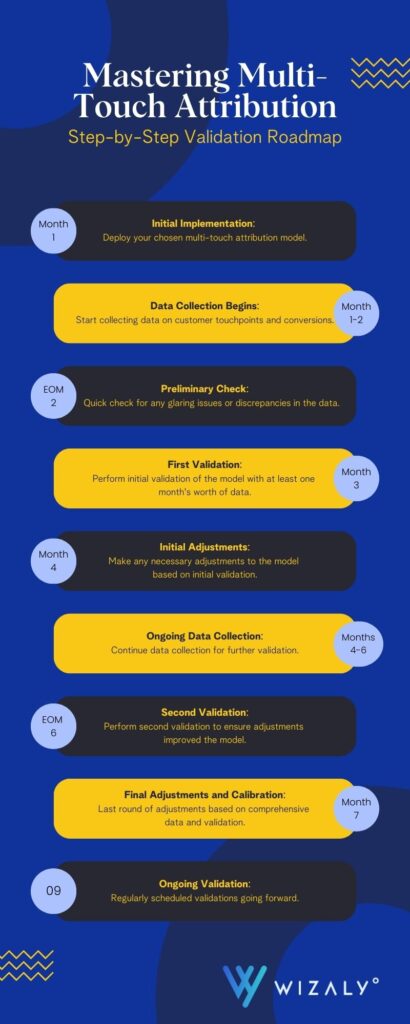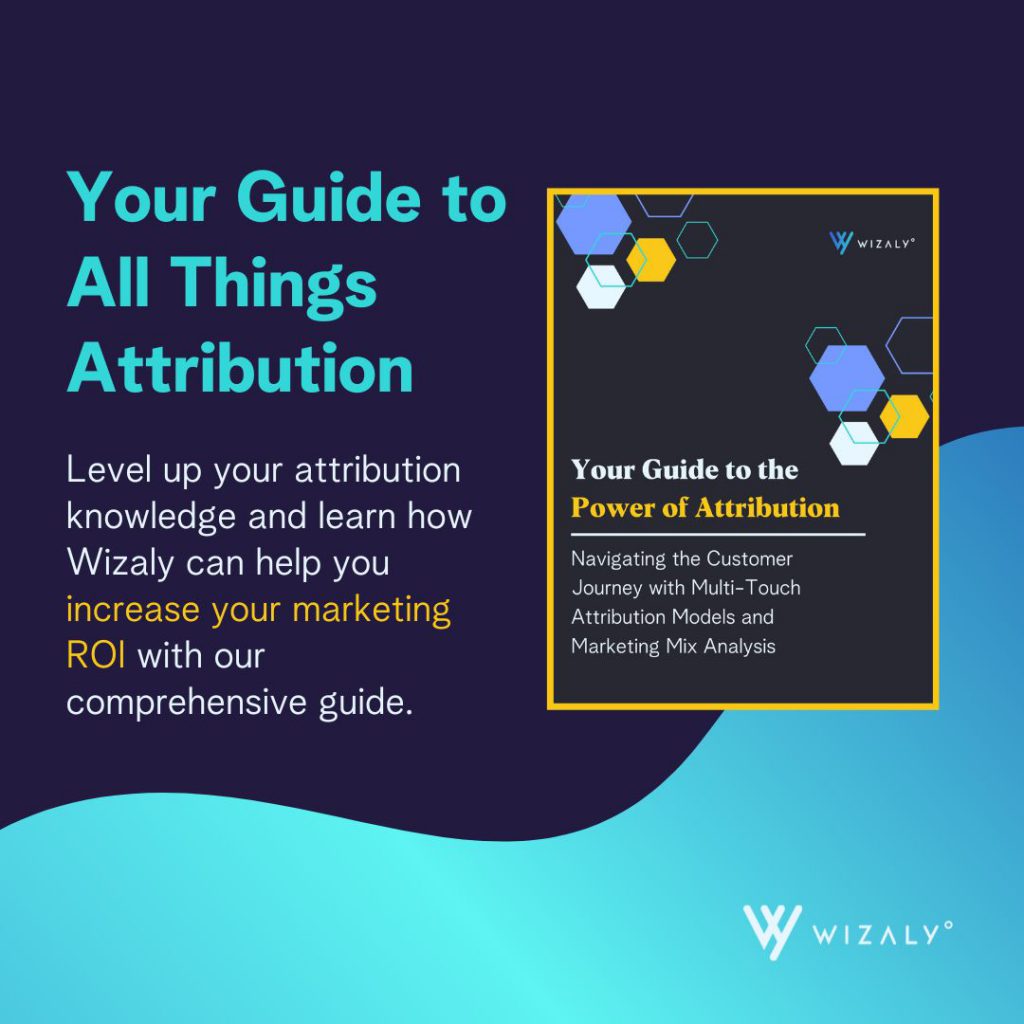Are you still relying solely on first-touch or last-touch attribution methods to evaluate your marketing campaigns? Have you ever wondered if there’s a more comprehensive approach to understanding your customer’s journey? If you’re a marketing director or a C-suite executive invested in maximizing ROI, you need to consider adopting multi-touch attribution methods.
This article delves into the intricate world of multi-touch attribution, going beyond the simplistic first-touch vs last-touch models to offer a comprehensive understanding. We will explore types of multi-touch attribution models, the significance of attribution in your marketing efforts, and the analytics that empower these models. Get ready to redefine the way you measure the effectiveness of your marketing campaigns.
Understanding the Complexity of Multi-Touch Attribution vs Last-Touch Attribution
The Evolution of Attribution Models
There was a time when single-touch attribution, particularly last-touch attribution, was the go-to method for most marketers. This model assigns all credit for a conversion to the last marketing touchpoint before conversion. However, as customer journeys have become increasingly complex, the limitations of last-touch attribution models have become more evident. Attribution has evolved significantly, and multi-touch attribution now offers a more nuanced view of customer behavior.
Why Single-Touch Models Don’t Cut It Anymore
Single-touch attribution models like first-touch and last-touch have certain merits. They’re easy to understand and implement. In first-touch attribution, all the conversion credit goes to the first touchpoint, typically giving marketers insights into which channels are most effective for lead generation. However, these models ignore the middle of the customer journey and don’t account for multiple interactions a customer may have with various marketing channels.
Unveiling the Multi-Touch Paradigm
Multi-touch attribution acknowledges that customers often interact with multiple touchpoints—social media posts, emails, PPC ads, and more—before making a conversion. Unlike last-touch attribution or first-touch attribution, multi-touch attribution models offer a balanced view, attributing conversion credit to multiple touchpoints along the customer journey. This allows for more sophisticated analytics and an in-depth understanding of your marketing efforts.
How Multi-Touch Adds Value
Let’s say you’re running an extensive online marketing campaign. Some users might discover your brand through an organic search, then later click on a PPC ad, and finally make a purchase after receiving a targeted email. In this scenario, each touchpoint plays a role in the conversion. With multi-touch attribution, you can identify the value of each of these touchpoints, giving you powerful insights to optimize your future campaigns.
Multi-Touch Attribution and the Modern Marketer
In today’s multi-channel world, where customers are bombarded with numerous brand messages daily, capturing their attention requires an intricate, well-coordinated marketing strategy. The multi-touch attribution model gives modern marketers the tools to understand these complexities. By evaluating the contribution of every touchpoint, marketers can allocate resources more efficiently, enabling data-driven decisions that enhance marketing ROI.
Different Types of Multi-Touch Attribution Models in Analytics

The Linear Attribution Model
In the realm of multi-touch attribution, the linear attribution model is one of the most straightforward. It assigns equal credit to every touchpoint along the customer journey. For example, if a user interacts with your brand through a social media ad, a blog post, and an email before converting, each of these touchpoints would receive a third of the conversion credit. The linear attribution model is especially useful when you believe that each interaction is equally valuable in moving the customer towards conversion.
Time Decay Attribution
Time decay attribution is a type of multi-touch attribution model that gives more weight to the touchpoints closer to conversion. This model acknowledges the increasing importance of interactions as customers move closer to making a purchase decision. Time decay model gives more credit to the last few interactions, allowing you to understand what finally tipped the scale in favor of conversion.
U-Shaped and W-Shaped Attribution
These are more complex forms of multi-touch attribution models. In the U-shaped model, 40% of the credit is assigned to the first and last touchpoints, with the remaining 20% distributed among other interactions. In W-shaped attribution, three touchpoints—first interaction, lead creation, and conversion—receive more significant weight. These models are for marketers who want to understand the impact of the first touchpoint, middle interactions, and the last touchpoint in a conversion.
Full-Path Attribution Model
Going beyond just the first and last touch, the full-path attribution model considers every interaction a customer has with your brand, from the first touch to becoming a customer. It distributes credit among all these touchpoints, giving you a complete picture of the customer journey. This model is best suited for businesses with long, complex sales cycles.
Custom Attribution Models
Finally, for businesses with unique customer journeys that don’t neatly fit into any of the above categories, custom attribution models allow for maximum flexibility. Custom attribution models let you assign varying degrees of importance to different touchpoints based on your specific business needs. This is the ultimate in personalized marketing attribution, enabling a tailored strategy that can provide exceptional results.
How to Implement Multi-Touch Attribution Successfully

Assess Your Current Attribution Method
Before you transition to a multi-touch attribution model, it’s essential to evaluate your current attribution method. Are you using last-touch or first-touch attribution? Knowing your starting point will help you understand the limitations of your existing approach and the gaps that multi-touch attribution can fill.
Choose the Right Multi-Touch Attribution Model
Deciding the right attribution model for your business is crucial. Whether it’s linear, time decay, or a custom model, your choice should align with your marketing objectives and the nature of your customer journey. Different attribution models serve different purposes, and choosing the right one can be the key to optimizing your marketing campaigns.
Use the Right Attribution Software
While you can manually track attribution data, it’s highly inefficient and prone to error. Multi-touch attribution software can automate the process, providing more accurate and actionable insights. Companies like Wizaly specialize in customer journey attribution platforms that make implementing multi-touch attribution easier and more effective.
Validate Your Model Periodically
Multi-touch attribution is not a ‘set it and forget it’ kind of deal. As your marketing efforts evolve and new channels are added to the mix, your attribution model may require tweaking. Periodic validation will ensure that your model remains aligned with your business goals.
Training and Team Buy-In
Finally, successful implementation of multi-touch attribution requires that your team understands the model and its implications. Training sessions can help in acquainting your team with the nuances of your chosen attribution model. Securing team buy-in is crucial for the long-term success of any new attribution strategy.
Maximizing the ROI of Your Marketing Efforts through Multi-Touch Attribution

Why Attribution Matters in ROI Calculation
At its core, attribution is a method of assigning credit for a conversion to various touchpoints in the customer journey. This is especially critical for calculating the ROI of your marketing campaigns. Knowing which touchpoints contribute the most to conversion allows for more targeted spending, thereby maximizing ROI.
Data-Driven Decision Making
Attribution data is gold when it comes to making informed decisions. With precise information about how each touchpoint contributes to conversions, you can allocate your marketing budget more efficiently, opting for channels and strategies that offer the best ROI.
Balancing Long-Term and Short-Term Goals
While last-touch attribution may offer immediate insights into what’s driving conversions now, multi-touch attribution models help you understand the broader picture. They allow for a balanced approach that considers both short-term conversions and long-term customer engagement.
Summary
As marketing strategies evolve in complexity, so does the need for a more nuanced approach to attribution. The limitations of last-touch and first-touch attribution models are well-understood by seasoned marketers. It’s time to level up and adopt multi-touch attribution models that offer a more comprehensive understanding of your customer journey.
Multi-touch attribution allows for a more balanced view, giving credit where it’s due at every touchpoint. It is the key to understanding the full path your customers take from awareness to conversion. By adopting the right attribution model, validating it periodically, and equipping your team with the necessary training, you can maximize the effectiveness and ROI of your marketing efforts.
Understand the Limitations of Single-Touch Models: Last-touch and first-touch attribution provide only a narrow view of the customer journey.
Choose the Right Model: Whether it’s linear, time decay, or custom, choosing the right multi-touch attribution model is crucial for accurately measuring ROI.
Technology is Your Friend: Utilize specialized attribution software like Wizaly’s customer journey attribution platform to simplify the complex process of multi-touch attribution.
Validation is Crucial: As your marketing strategies evolve, it’s important to periodically validate your attribution model to ensure it remains relevant and accurate.
Team Buy-In and Training: The successful implementation of a new attribution model requires understanding and commitment from your entire team.
Balance Short-Term and Long-Term Goals: Multi-touch attribution gives you the broader perspective needed to balance immediate conversions with long-term customer engagement.
Don’t leave your marketing efforts to guesswork. If you are new to multi-touch attribution or are looking for ways to optimize your existing model, reach out to Wizaly. Our state-of-the-art customer journey attribution platform can provide you with the tools and insights you need to take your marketing attribution to the next level. Contact us today to learn more!




